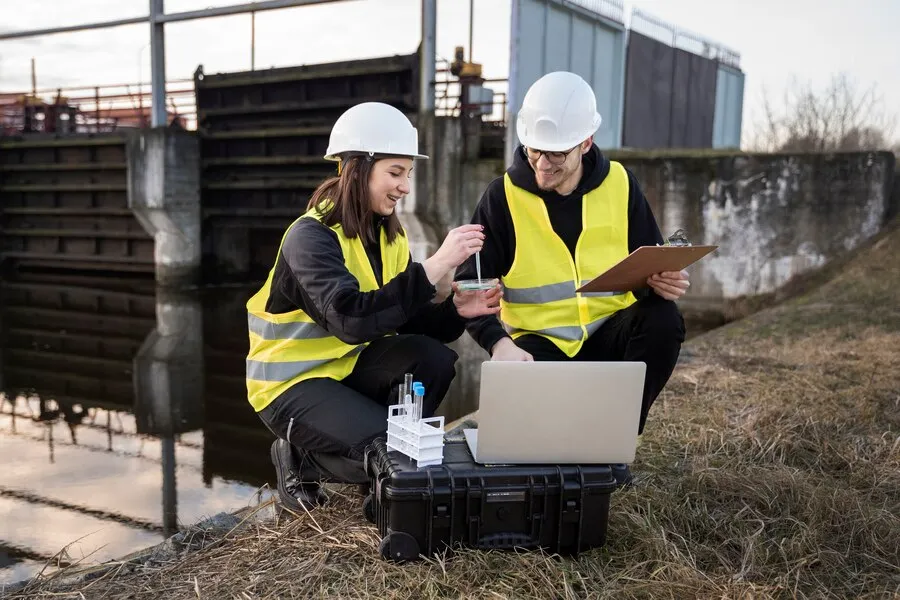Key Takeaways:
– Periodic water main testing is crucial for maintaining urban infrastructure and preventing costly damages.
– State-of-the-art tools, such as a hydrostatic test pump, are revolutionizing the testing and maintenance processes.
– Proactive approaches in water main testing can lead to significant long-term economic and environmental benefits.
Introduction to Water Main Health
The essential elements of urban water distribution systems, such as water mains, are essential to city people’s everyday existence. Like any other critical infrastructure, the integrity of water mains is essential for the continuous supply of clean water and the overall well-being of a city. Potential risks lie in the backdrop of these piping networks; aging systems, corrosion, and relentless wear and tear can eventually lead to significant environmental and health impacts. Regular, comprehensive testing of these mains is instrumental in flagging issues before they become emergencies, safeguarding the water quality, and ensuring public health. Integrating a hydrostatic test pump into maintenance routines is an example of utilizing advanced tools to maintain water central health effectively.
How Water Main Testing Prevents Infrastructure Failure
The unseen yet perilous threat of water primary failure stands as a reminder of the fragility of urban infrastructure. Catastrophic breaks or even small leaks can lead to substantial water losses, road closures, property damage, and an interrupted supply to consumers. By implementing frequent water central inspections aided by a hydrostatic test pump, municipalities can detect potential problems early. It prevents infrastructure failure by ensuring prompt repairs are made. These proactive measures ultimately contribute to reliable water services and the conservation of resources, which is vital in our sustainability-focused world. The Environmental Protection Agency casts light on the importance of this with resources detailing routine water main testing.
Technological Advancements in Water Main Testing
Modern water main testing has moved beyond rudimentary checks and excavations to cutting-edge technologies that ensure accuracy and efficiency. Noninvasive acoustic sensors can now detect even the quietest leaks, while inline inspections carried out by robotic crawlers offer detailed internal visuals of pipe conditions. These advances significantly minimize disruption and environmental impact while delivering precise diagnostics that enable effective maintenance strategies. As such, municipalities can achieve a much more thorough understanding of their systems’ health without additional strain on resources or inconvenience to the public.
The Environmental Impact of Robust Water Main Systems
An intact and well-functioning water central system is instrumental in sustainable water management. Regular and reliable testing preserves this resource by catching leaks quickly, preventing needlessly treated water from going to waste, and mitigating the environmental burden of excessive water processing. It serves a direct role in global environmental conservation efforts by ensuring that precious water resources are not squandered due to failing urban water infrastructures. Maintenance champions the more significant cause of environmental sustainability by ensuring that our cities’ water reserves are managed responsibly.
Understanding the Process: From Detection to Rehabilitation
Remediating water central systems begins with effective detection, where equipment is vital. Upon detecting a flaw, municipalities can shift their focus to rehabilitation methods tailored to the specific issues. Prompt, targeted response can transform a potential water system disaster into a manageable, routine maintenance issue. This systematic approach is corroborated by academic studies and industry reports, which provide a repository of information on the effectiveness of smart water main testing and the innovative methodologies applied to ensure sustainable future cities.
The Economic Implications of Water Main Health
The economic dimension of water central maintenance must be balanced. Municipalities often face the harsh reality of budget constraints. Still, they must weigh the immediate costs of regular testing against the severe financial implications of emergency repairs and system overhauls following unexpected failures. The disruption to businesses and residents alike, alongside the repair costs and loss of water revenue, paints a clear picture: an investment in preemptive testing is an investment in a city’s economic stability and the longevity of its infrastructure.
Community Involvement in Water Main Health
Community engagement is a linchpin in the pursuit of adequate water central maintenance. Residents informed about the significance of a well-maintained water infrastructure are more likely to participate in conservation efforts, report issues, and support municipal initiatives. Public workshops, awareness campaigns, and educational outreach programs can foster a collaborative environment where the entire community preserves the security and sustainability of their water resources.
Policy and Regulation Surrounding Water Main Testing
The synergy between policy directives and water primary health outcomes is substantial. Regulations that spell out minimum standards for testing and maintenance schedules drive uniformity and accountability across cities and towns. These policies, often underpinned by health and environmental concerns, can dictate the frequency, methodology, and standards for water main tests, arguably serving as one of the most significant backers ensuring the health and functionality of water distribution systems.
Overcoming Challenges in Water Main Testing
Despite the acknowledged importance of routine water main testing, several challenges loom over its practical implementation. Logistics, financial constraints, and the intricacies of underground pipe networks are just a few hurdles that may impede comprehensive testing practices. It will take sustained innovation in testing techniques, community education, and developing public-private partnerships to guarantee that water central maintenance best practices are widely implemented.
Looking to the Future: Predictions for Water Main Testing
As we look ahead, the evolution of water main testing is likely to hinge on sustainability and adaptability. The industry is poised to produce increasingly more sustainable, accurate, and less invasive testing solutions. This trend directly responds to the challenges of climate change and growing urban populations. Cities integrating these new systems into their infrastructure will be at the forefront of crafting resilient, adaptable urban environments equipped to handle future water management challenges. Regular water main testing is not just a maintenance measure; it’s a cornerstone of urban sustainability. Employing technological innovations enables city planners and engineers to prevent system failures, ensure economical water distribution, and reduce environmental impact. Recognizing the significance of water central health and testing is paramount for a sustainable future within our cities.

